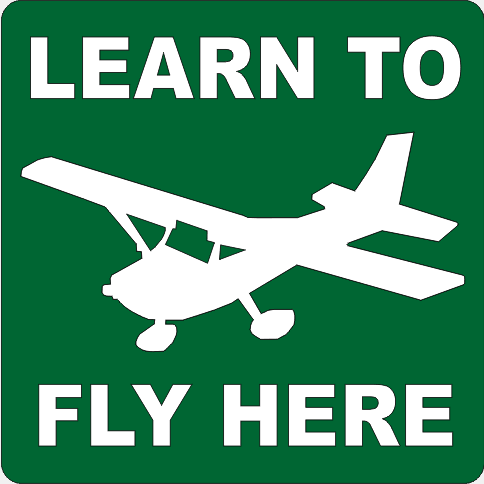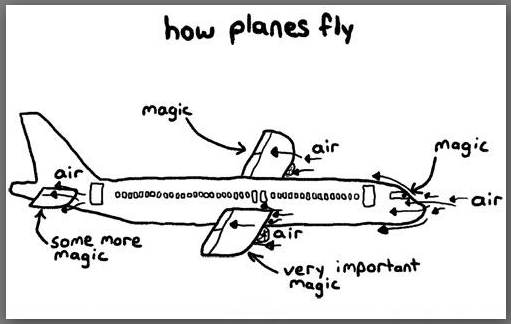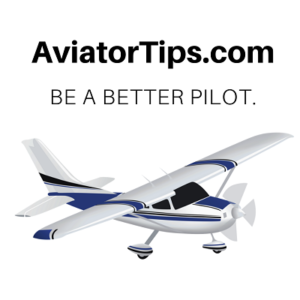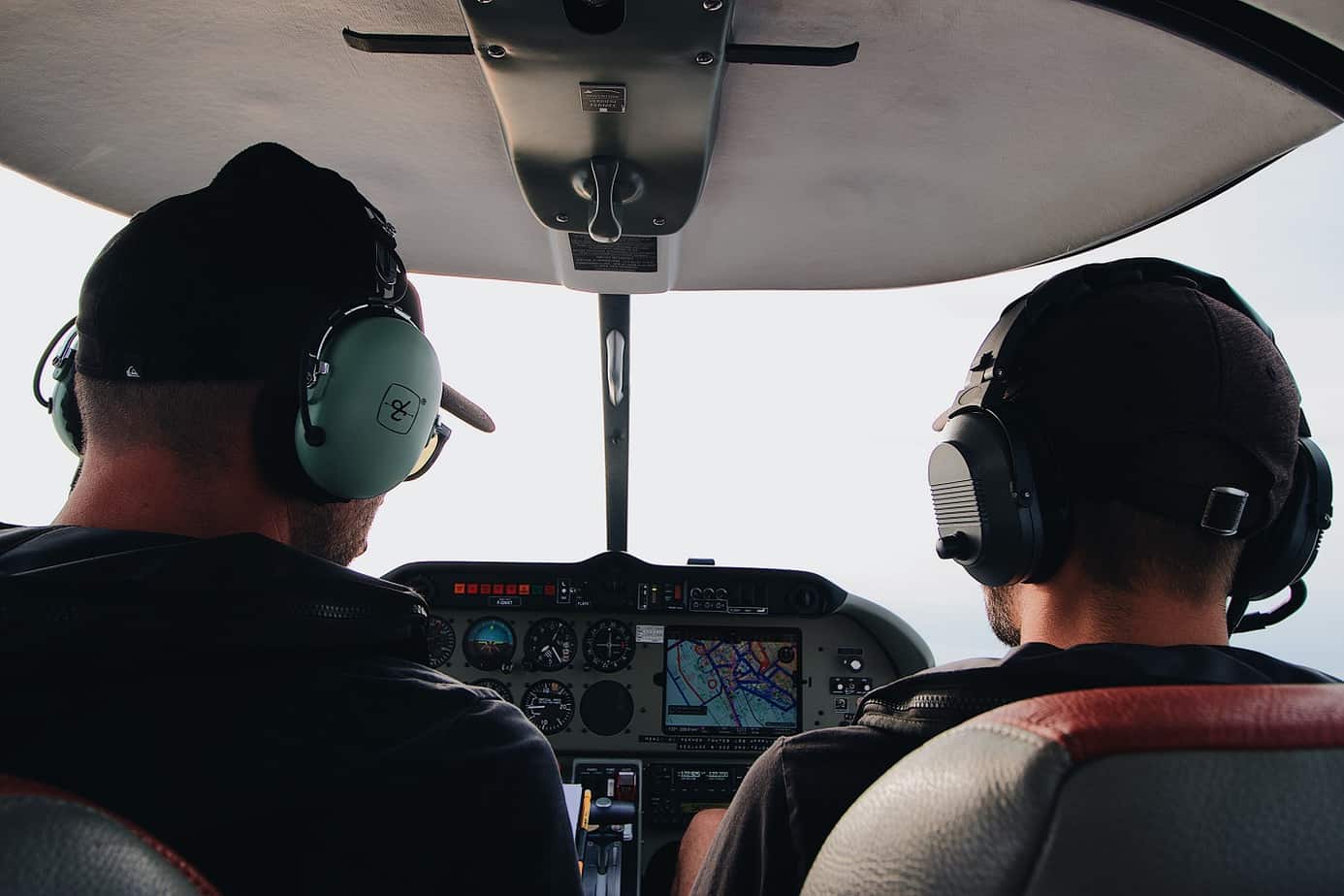How long does it take to learn to fly a plane?
This is a common question for those that are interested in aviation. There are many factors that will influence the length of time required to learn to fly a plane. We’ll explore those in detail below, but for now, the short answer is this:
While it varies widely by the student, it can take anywhere from 2 months to 1 year to learn how to fly a plane. A Private Pilot Certificate requires a minimum of 40 hours of flight time, 20 of which must be with an instructor. The national average in the United States is between 60 and 70 hours. In addition to flight time, you can expect 2-3 hours of study time for each hour flown.
Private Pilot Certificate
Private Pilot Certificates are governed by FAR Part 61. Student pilots must have a minimum of 40 hours of flight time to receive a certificate. While 40 hours is the minimum, most students average 60-70 hours of flight time before they take their checkride. (A checkride is part of the FAA Practical Test to receive your Private Pilot Certificate. This is the actual flying portion of the test, similar to the driving test you took to get your Driver’s License. Just more complex.)
Read also: How Much Does It Cost To Learn To Fly A Plane?
Other License Types
Due to the amount of information involved, this discussion focuses on earning a Private Pilot Certificate. There are other license types, ratings, and endorsements that have additional requirements. These are not required for basic flight privileges but are for certain, specific circumstances. Some of these include:
- Sport Pilot Certificate (20 hours): A limited certificate that allows you to fly small, Light-Sport aircraft only.
- Tailwheel Endorsement (5-10 hours): Allows you to fly “taildraggers”.
- Complex Aircraft Endorsement (5-10 hours): Allows you to fly “complex” aircraft, typically defines as airplanes with retractable landing gear, flaps, and constant-speed propellers.
- Instrument Rating (40 hours): Allows you to fly by instruments in inclement weather (IMC – Instrument Meteorological Conditions).
- Multi-Engine Rating (10-15 hours): Allows you to fly multi-engine aircraft.
- Commercial Pilot Certificate (250 hours): Allows you to get paid for flying.
- Airline Transport Pilot Certificate (ATP – 1,500 hours): Allows you to fly for an airline.
- Type Ratings: These are required to fly specific, advanced aircraft. A Cessna 172 is a basic airplane that doesn’t require a type rating. However, if you want to fly a Turboprop or a Gulfstream you’ll need training specific to the aircraft you want to fly.
There are many more examples, but many of them require an entirely separate discussion. In the interest of brevity, we’ll tackle those another day.
Dual Instruction
Of the 40 hours required for your certificate, 20 of them must be “dual instruction”. In other words, you have to fly them with your Instructor. Once again, 20 hours is the minimum requirement. You will likely have more than 20 hours of dual instruction.
Solo Flight
At some point in your flight training, your Instructor will get out of the airplane and send you on your way to do a few laps around the pattern. This is your solo. There are no minimum requirements specified. This will happen at the discretion of your Instructor because he/she will know when you’re ready.
Read also: How Do You Enter And Exit The Traffic Pattern At An Uncontrolled Airport?
On average, student pilots solo after 10-20 hours of flight time. It varies widely by the student because everyone has different abilities and learns at different speeds. Don’t worry about soloing by any specific point. Just focus on learning the information so you can be a better pilot.
It’s okay to spend more time in the air than the minimum requirements, or take longer before your first solo. In fact, it’s perfectly normal and expected. When you learn to fly, it’s about becoming proficient in the airplane so you can be a competent pilot. Take your time. Get it right.
#ProTip
In addition to the hours of flight time, there are also specific types of flights and instruction that student pilots need to complete. These include night flights, night take-offs and landings, instrument flights, and cross-country flights.
Please note: A cross-country flight isn’t what it sounds like. When we refer to a cross-country flight, what we’re referring to is a flight of at least 100 nautical miles (nm), with one segment, or leg, with a minimum distance of 50nm from the departure point.
Ground School / Independent Study
In addition to your actual flight time, you can expect 2-3 hours of “book learning” for every hour of flight. You may take a ground school course or you may possibly work out of a textbook. Either way, you will spend a substantial amount of time studying all of the concepts, rules, and regulations that you’ll be required to know.
Part 141 Flight Schools

Some flight schools are governed by FAR Part 141, which means that the school has met an additional set of requirements. A Part 141 flight school is one that has a defined curriculum approved by the FAA. As a result, the training is more structured and less flexible. This more rigid instruction results in a faster pace of instruction. It also requires a lower minimum number of flight hours to get your certificate (only 35).
This by no means makes it superior to a Part 61 school. Most flight schools operate under Part 61 and provide an excellent training curriculum. Part 61 schools have the benefit of a more flexible environment, which often is better for the student. Because it’s a more structured learning environment, Part 141 flight schools may be a better choice for someone that’s looking to make a career out of flying.
Part 61 vs Part 141 Requirements
| Flight Time | Part 61 | Part 141 | Average Time |
| Total Time | 40 | 35 | 60-70 |
| Solo Flight Time | 10 | 5 | 15-20 |
| Solo Cross Country | 5 | 3 | 10-15 |
| Dual Instruction | 20 | 20 | 20-30 |
| Night Flying | 3 | 3 | 3-5 |
| Cross Country | 3 | 3 | 3-5 |
| Instrument Instruction | 3 | 3 | 3-5 |
| Cross Country – Minimum Distance From Departure Airport | 50nm | 50nm | na |
| Night Take-Offs and Landings | 10 full-stop | 10 full-stop | 10-15 |
The table above lists the various components of flight training along with the required minimums and average time to completion. One thing to keep in mind when you learn to fly a plane is that the less frequently you train, the longer it will take. For example, if you only book a 2-hour session every other week, you’ll spend a good deal of time reviewing material from your last lesson. On the other hand, if you book a 2-hour session 3 times per week, the information is still fresh, requiring less review. This results in a much more effective lesson.
Accelerated Courses
Many flight schools offer accelerated courses for those that want to complete their flight training quickly. These typically involve full days of training in a short time period, allowing you to get your certificate in as little as 2-3 weeks.
Read also: 11 Tips For Learning To Fly When You’re Broke
Eligibility
In order to be eligible for a Private Pilot Certificate, you must meet a number of specific requirements. However, to simplify the list, you must be 17 years of age, be able to read, write, speak, and understand English, and be adequately trained and prepared by a Certified Flight Instructor (CFI). The full details are listed at the bottom of the page if you’d like more details.
Topics To Learn
There are a number of areas of study that you’ll be required to learn as part of learning to fly. These include:
Aircraft Systems
One of the first things you’ll learn is about the aircraft itself. When you learn to fly a plane, you need to understand how it works. You need to understand how to operate all of its components, as well as how to make sure they are all in serviceable condition. You’ll need to know what to do if something isn’t working correctly and many other “memory items”.
For example, you’ll be required to learn and memorize long lists of information, including many “memory items”. It can be difficult to remember this type of information, so you’ll spend a great deal of time studying. Read this post about the minimum instruments required for VFR flight to learn one of the tricks pilots use.
Aerodynamics
Another topic you’ll study early is Aerodynamics. This includes principles like the 4 Forces of Flight (Lift, thrust, drag, and weight). It also includes understanding how airflow acts on the wings and body of the aircraft, which is critical to know when you learn to fly a plane.

Flight Operations
Just like when you drive a car, there are “rules of the road” when you fly a plane. You’ll need to learn the rules for aircraft movement on the ground, in the pattern at the airport, and as you fly through various types of airspace.
Flight operations are more complex than driving a car and just to make it more complicated, there are no road signs in the air. You have to know what you can and can’t do to operate safely. You’ll also need to understand how to communicate with Air Traffic Control, which is a skill in itself.
Weather
One of the major contributors to the safety of any flight is the weather. When you become a pilot, you won’t be a full-blown meteorologist, but you’ll understand it better than most. This is an absolute necessity. Weather is one of the major contributors to accidents, so you have to know when it’s safe to fly and when you should postpone it until another day.
Read also: What Pilots Can Learn From The Draco Crash
Regulations
Last but not least, you’ll need to understand a plethora of regulations. There are literally dozens of rules that you have to comply with on every flight. In order to stay in compliance, you need to know what those requirements are.
It may seem overwhelming at first and if it does, it’s probably because it is. Don’t be discouraged. With practice, you’ll master everything you need to know. In addition, you’ll continue to learn.
All good pilots understand that learning to fly is a journey, not a destination.
Additional Requirements
There are three components you’re likely to hear during your flight training. Your instructor will stress the importance of headwork, air discipline, and attitude toward flying. Now, these are obviously not part of the FAA’s official requirements. However, you’ll find that they are an important part of the process to learn to fly a plane.
Headwork
When you hear headwork, you likely tend to think about studying the book information. However, headwork is about exercising good judgment. When you learn to fly a plane, safety is a cornerstone of the curriculum. To be a good pilot, you need to make sound decisions.
For example, “buzzing the tower” is generally not considered to be a good idea. The FAA certainly doesn’t think so. Not even if you’re Tom Cruise. (Sorry, Tom.)
You also need to be thorough and pay attention to details. Using your checklists and not skipping details like physically checking the engine oil level are good examples.
Air Discipline
Air discipline simply refers to how well you operate the aircraft. You need to be able to fly with precision, having good control of the aircraft. It also includes knowing your limitations and not attempting flights or maneuvers that are beyond your capability.
Read also: How Dangerous Is Learning To Fly?
Attitude Toward Flying
Finally, one of the most important parts of learning to fly a plane is having a positive attitude. You need to have a strong work ethic and a willingness to learn. If you don’t put in the time to master all the details, you likely won’t do well.
Full FAA Eligibility Requirements For A Private Pilot Certificate
According to FAR Part 61, Section 103: to be eligible for a Private Pilot Certificate, a person must:
- Be at least 17 years of age for a rating in other than a glider or balloon.
- Or, be at least 16 years of age for a rating in a glider or balloon.
- Be able to read, speak, write, and understand the English language. If the applicant is unable to meet one of these requirements due to medical reasons, then the Administrator may place such operating limitations on that applicant’s pilot certificate as are necessary for the safe operation of the aircraft.
- Receive a logbook endorsement from an authorized instructor who:
- Conducted the training or reviewed the person’s home study on the aeronautical knowledge areas listed in §61.105(b) of this part that applies to the aircraft rating sought; and
- Certified that the person is prepared for the required knowledge test.
- Pass the required knowledge test on the aeronautical knowledge areas listed in §61.105(b) of this part.
- Receive flight training and a logbook endorsement from an authorized instructor who:
- Conducted the training in the areas of operation listed in §61.107(b) of this part that applies to the aircraft rating sought; and
- Certified that the person is prepared for the required practical test.
- Meet the aeronautical experience requirements of this part that apply to the aircraft rating sought before applying for the practical test.
- Pass a practical test on the areas of operation listed in §61.107(b) of this part that apply to the aircraft rating sought.
- Comply with the appropriate sections of this part that apply to the aircraft category and class rating sought.
- Hold a U.S. student pilot certificate, sport pilot certificate, or recreational pilot certificate.
Recent Posts
FAA MOSAIC Final Rule: What Pilots, Manufacturers, and the Aviation Community Need to Know
Learn how the FAA’s MOSAIC final rule revolutionizes Light-Sport Aircraft certification, expands Sport Pilot privileges, and reshapes general aviation. See what’s changing, when it takes effect,...
Student Pilot Insurance: Essential Coverage for Aspiring Flyers
Discover how student pilot insurance can protect your flying dreams. Get expert tips and coverage options to ensure your safety and peace of mind.


